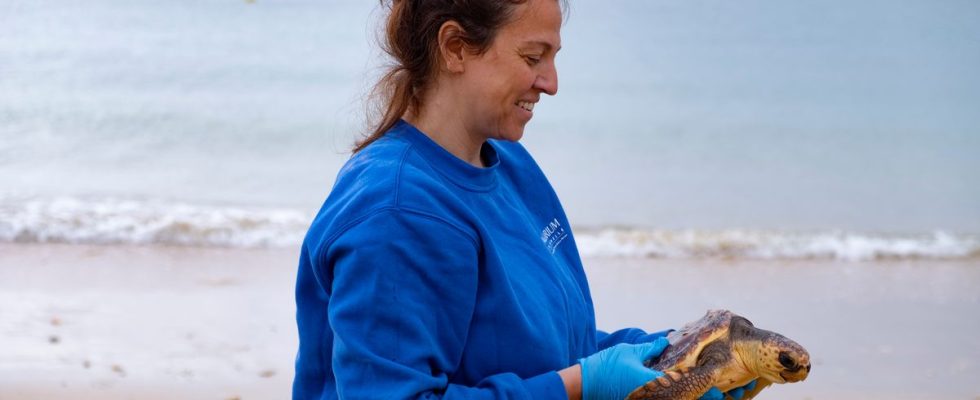This Thursday, from Conche des Baleines beach, on the Ile de Ré, sixteen sea turtles will set off gently on the sand to find the ocean, after a few months in the study and care center for sea turtles (CESTM) of La Rochelle Aquarium. Its director, Florence Dell’Amico, answered questions from 20 minutes on this release practiced by the center for thirty-five years. Over the years, 236 turtles have been cared for there before returning to their natural environment. An opportunity, on this World Oceans Day, to raise awareness among schoolchildren invited to the beach about the conservation of this species in danger of extinction.
This year, is the number of sixteen sea turtles released a bit exceptional?
Yes, it’s the most important since 2001. Sea turtles are experimenting with the open sea, but the winter storms (Gérard and Fien), which have been strong this year, make them deviate and they find themselves having to endure temperatures that are too low for their organism in Atlantic waters. Below 15°C, they find themselves in a kind of lethargy. They are solitary individuals, but they follow the same currents, which is why several of them run aground. They are juvenile turtles, most of which weigh between 700 g and 2 kg.
How do you support them?
When they arrive, they are often hypothermic or malnourished. They are subjected to several examinations to determine their state of health and to determine an appropriate protocol. A treatment can be recommended by the veterinarian attached to our center. We have the possibility of making them pass x-rays, scanners and ophthalmological examinations. Some have to get used to eating again, and force-feeding is sometimes used to improve the mobility of the digestive tract. Some turtles need to be rehydrated because they are too weak to have been able to hunt and eat. We have three rehabilitation aquariums and we have installed, for some, sorts of floating baskets, because, when they are too weak, there is a risk of drowning.
What are the criteria that allow you to assess that they are fit to return to the sea?
Before the release, we do a blood test, we also look at weight gain and general behavior. They must be able to hunt live crabs and perform resting phases under water. And, of course, they must have been out of medical treatment for quite a while.
Is there a risk that they get used to humans and are less able to return to their natural environment?
Even for sea turtles in captivity for twenty or thirty years, we have never had any problem returning to the wild. However, precautions are taken by wearing gloves and never giving food from hand to beak.
What have we learned about tracking turtles since placing transmitters on released individuals, which began in 2008?
We learned that some released turtles remained in the Bay of Biscay, demonstrating that this may be a feeding area for juveniles, which we did not know. Some of them washed ashore again after gaining some weight. The survival rate is quite good after the releases, as far as we know. Of course, some transmitters become detached or degrade and some data is lost.

